
“What Cannot be Shaken” mixed media on canvas 40 in. x 30 in.

“Regeneration” mixed media on canvas 48 in. x 36 in.

“Tributary Stream” mixed media on canvas 48 in. x 36 in.
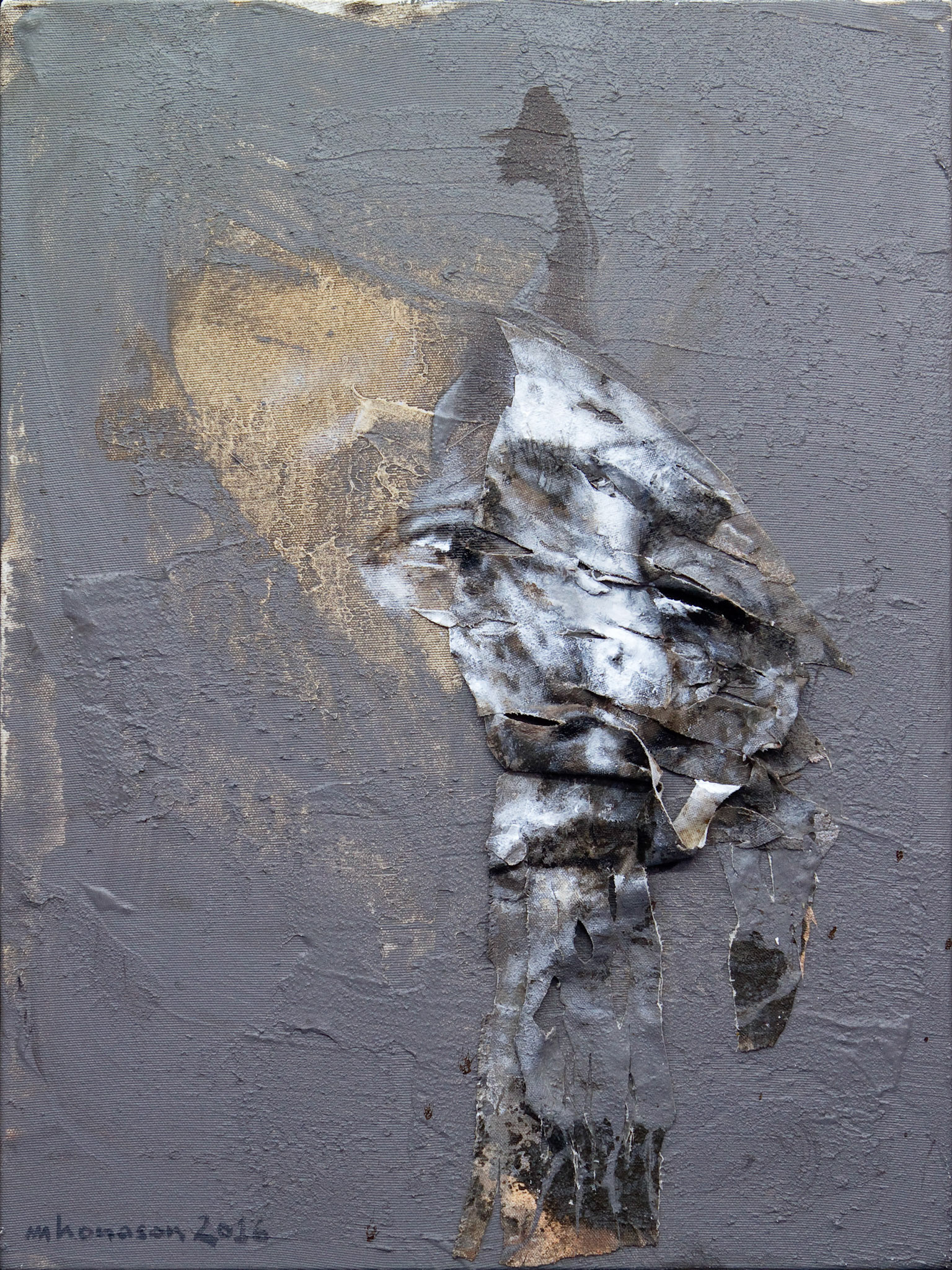
“Reverence” mixed media on canvas 24 in. x 18 in.
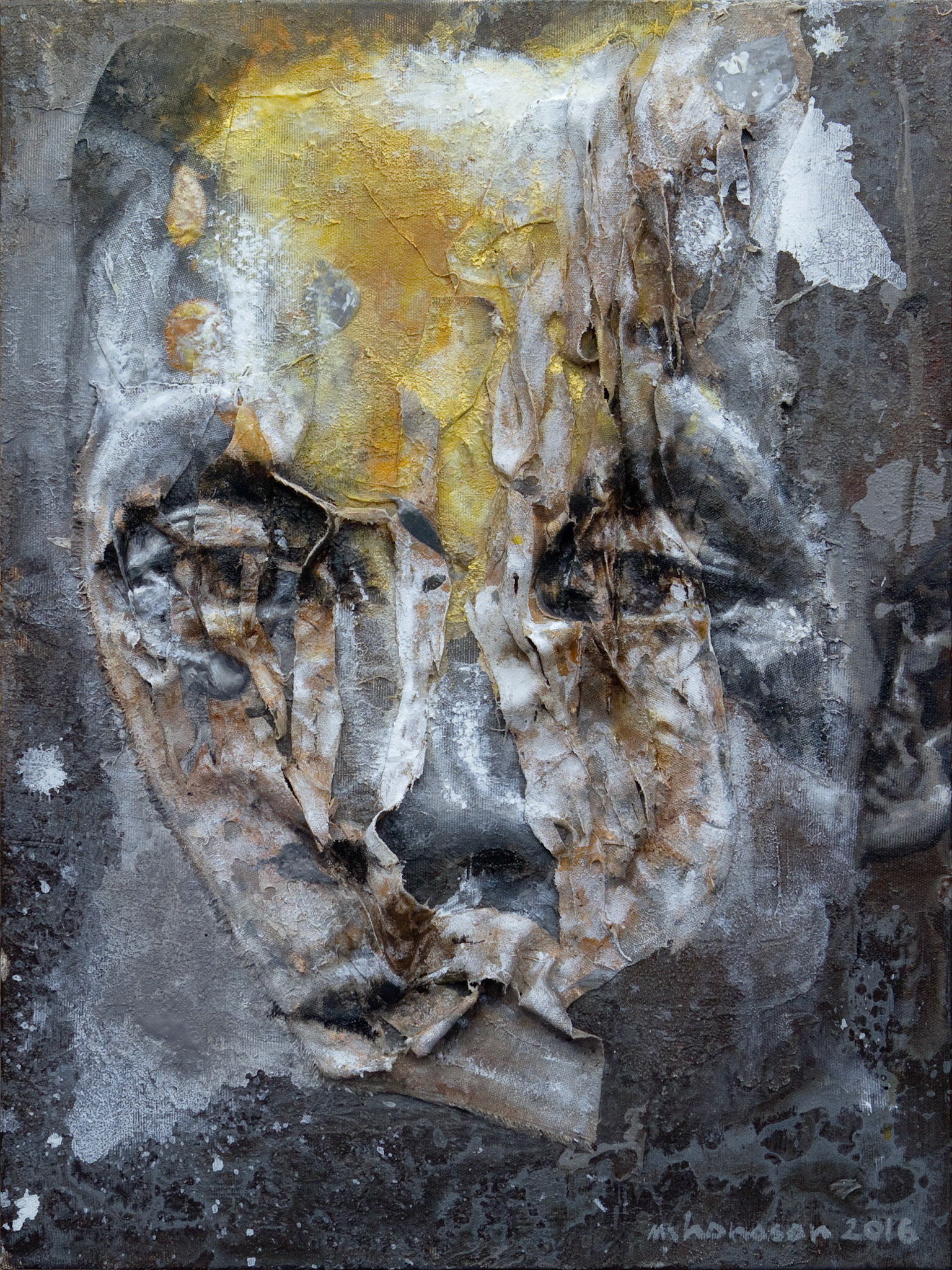
“Ember” mixed media on canvas 24 in. x 18 in.
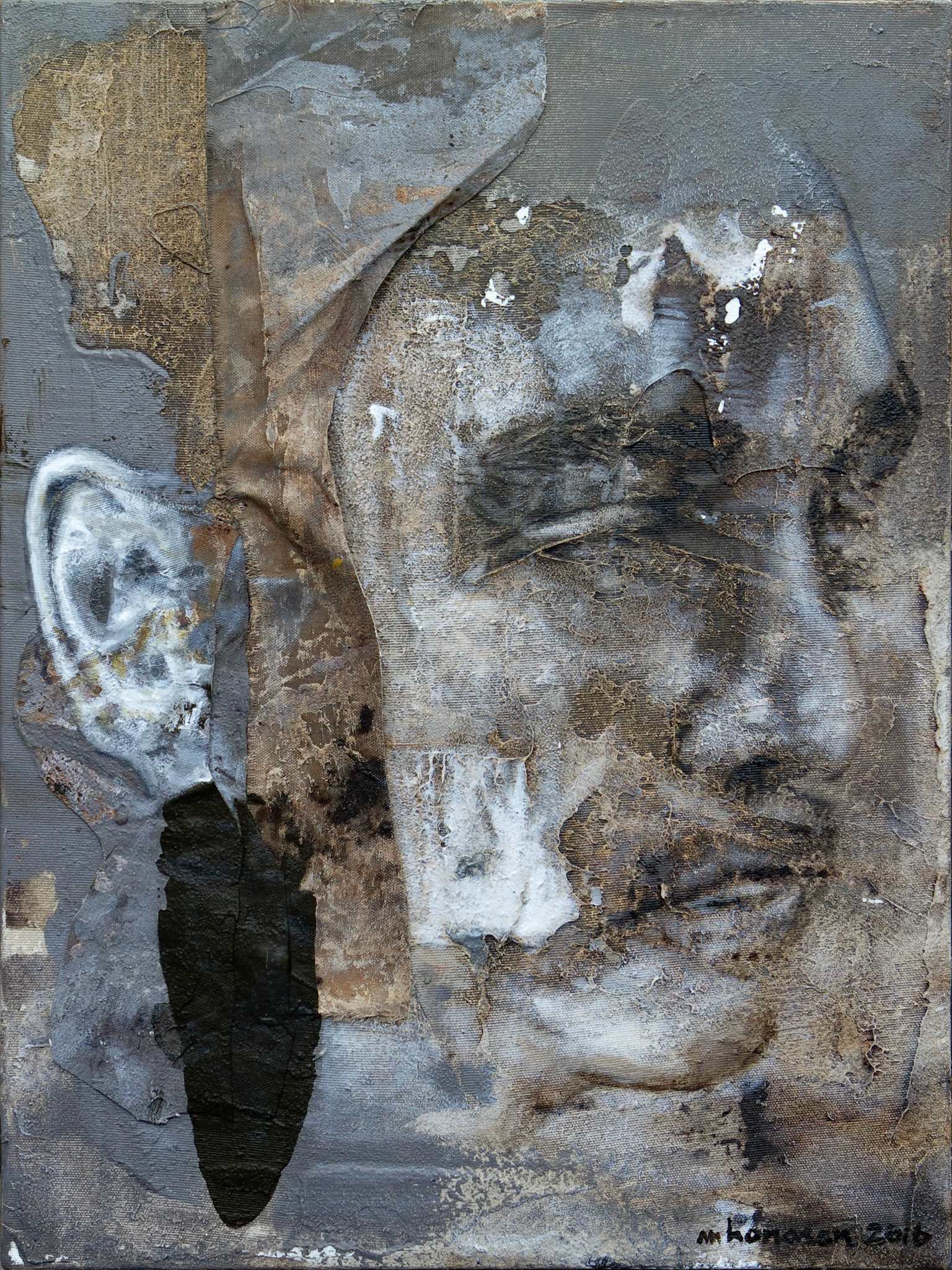
“Tabernacle” mixed media on canvas 24 in. x 18 in.
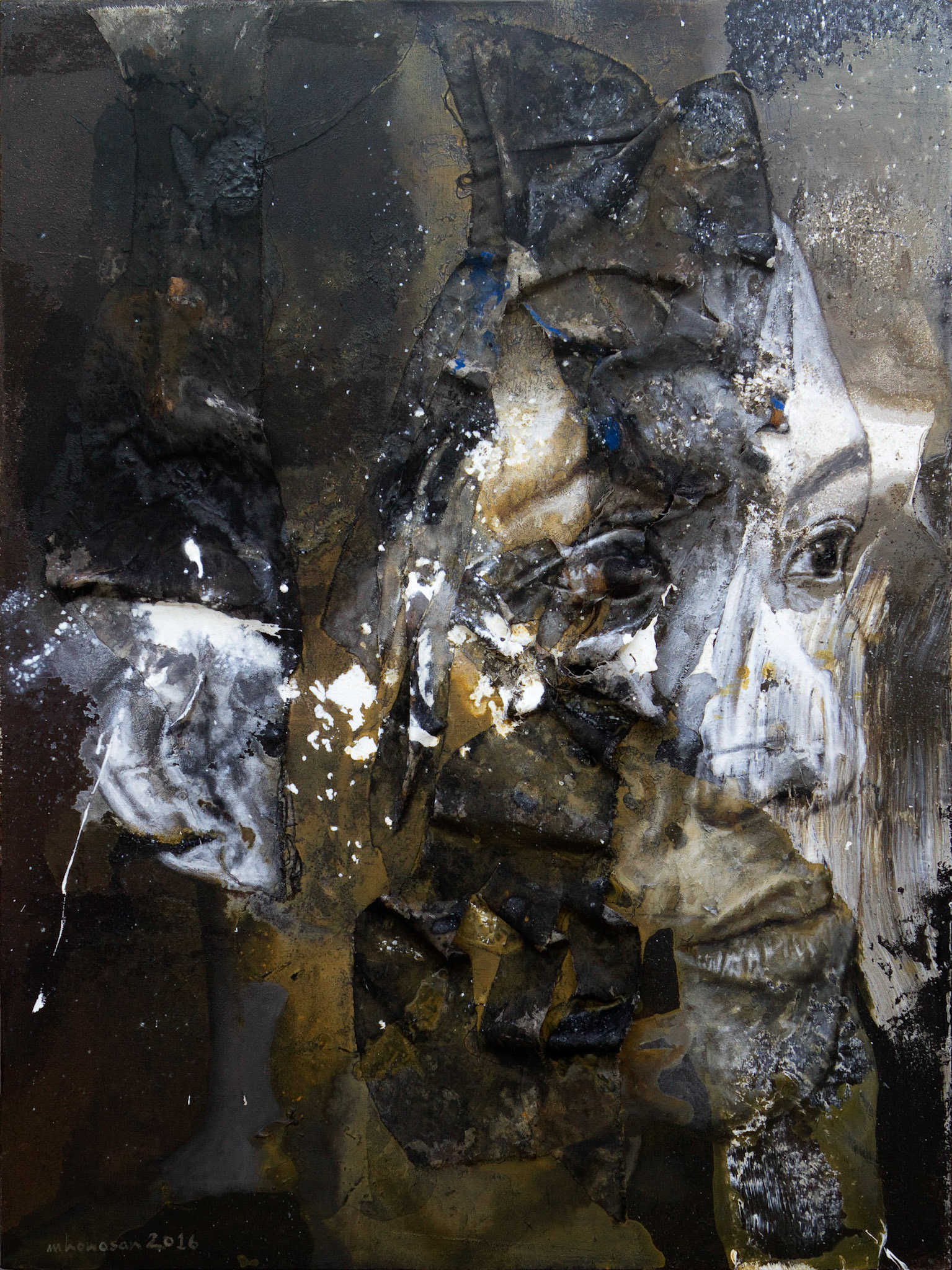
“Meadowlark” mixed media on canvas 40 in. x 30 in.

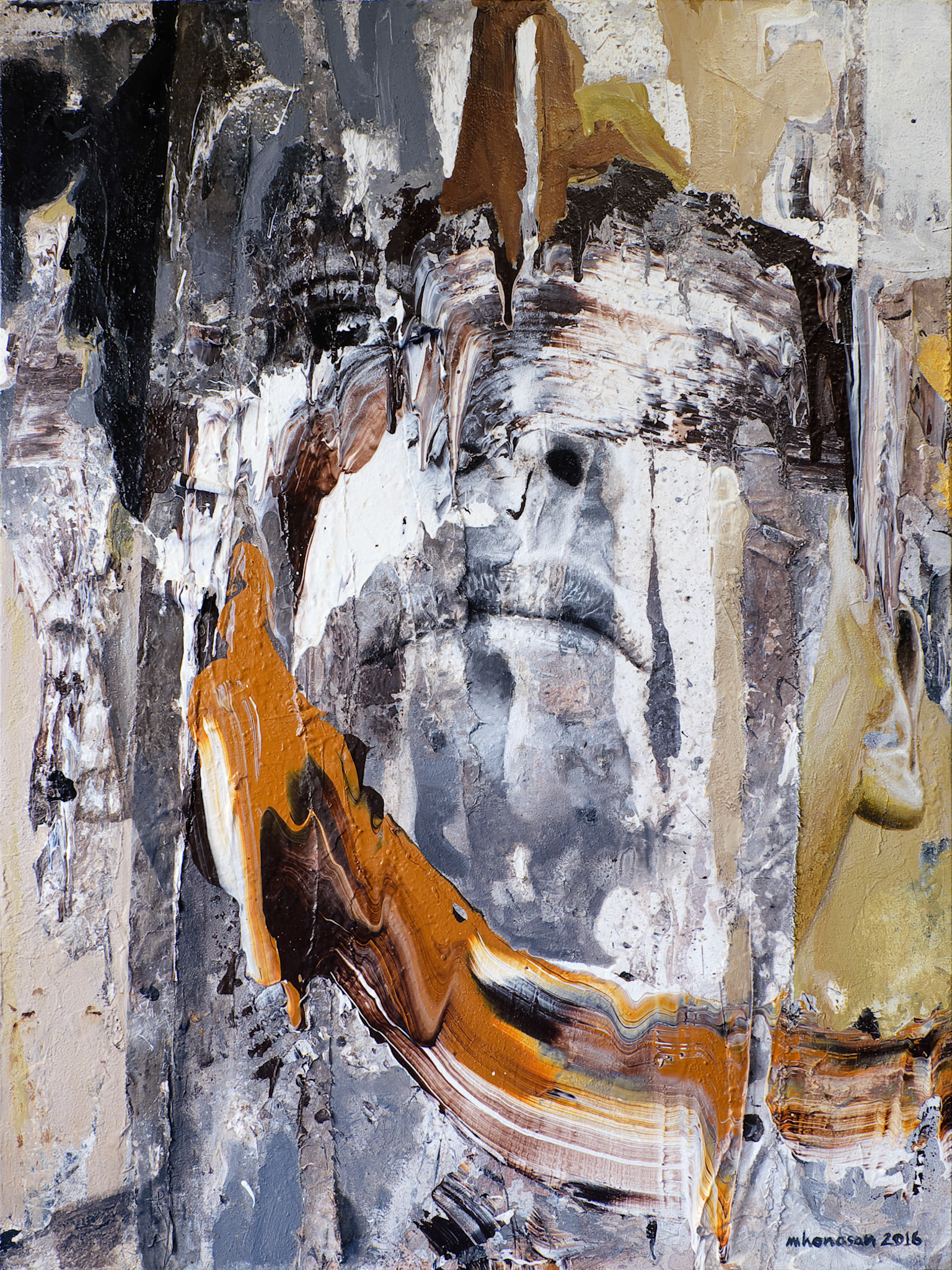
“Melting Pot” mixed media on canvas 48 in. x 36 in.
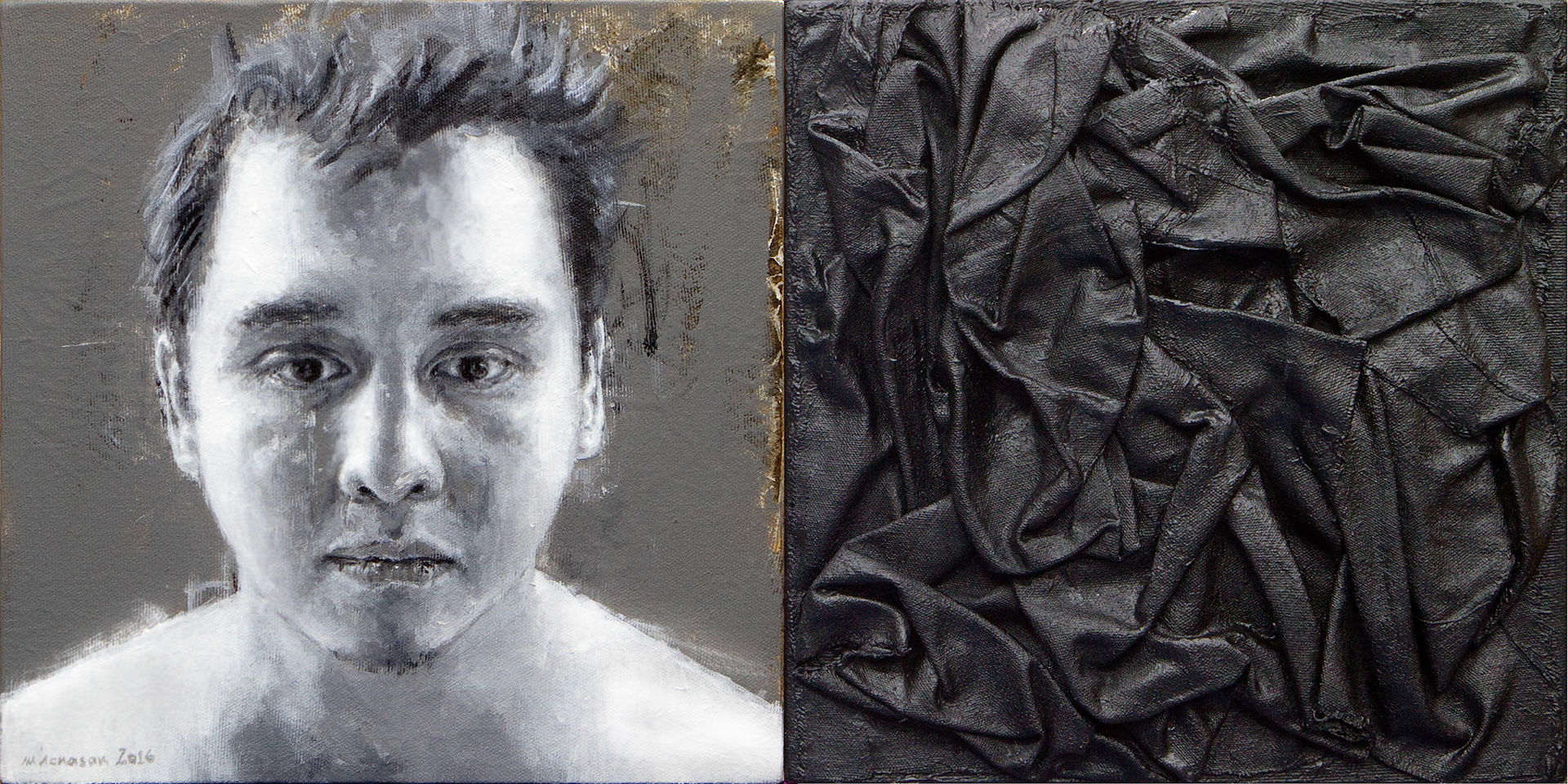
“Threshing Floor” mixed media on canvas 12 in. x 24 in.
Exhibition Outline
From the YOD Gallery website: https://www.yodgallery.com/copy-of-en-p-honasan-2016
YOD Gallery is pleased to present "Even These Stones Will Cry Out," a first solo exhibition by a Filipino Artist Martin Honasan (b.1976, Quezon City, Philippines). Honasan has been receiving much attention for his unique abstract portraits focusing on face, where paint, canvas and human face are treated as equal components. With Psychological theories such as Gestalt and Pareidolia that underlie, his works question morality, spirituality, existence and meaning through the image generated by the mind and sight of the audience.
In June 2016, as a YOD artist in residence, Honasan spent a month in Osaka working and living with his family. What kind of effect did the life in Osaka have on the artist? Please take this opportunity to see it in person at YOD Gallery.
Artist Statement
When we arrived in Shōeichō, a town in Neyagawa-shi, a city in Osaka-fu, Japan, its intricacy was immediately apparent, but there was also an effortless simplicity about it. In any new country I visit, the first thing I notice is the texture of the terrain -- the land and the structures that have flourished on its surface. The physical arrangement of a city and the flow of its traffic give me a basic sense of the layers of systems in place and the sensibilities of its people. I encountered a wide variety of locals in Osaka Prefecture: well-dressed business men, women with babies, and some very agile elderly people — most of them were riding simple everyday bicycles called mamachari, or "mom's bicycle" in English. I was amazed at the specific layers of history, refined through many generations, culminating in a particular kind of gentleness and sophistication that was striking to my outsider point of view.
During this stay, a Japanese friend brought me to a temple in the middle of Yodoyabashi, one of the busier cities within Osaka-fu. He says it is where he goes for some quiet, and to pray for success. I thought of the concept of "worship," which is often associated with temples, priests, and rituals. In my own belief system the person who worships becomes a temple, and worshippers gather together as a church -- worship is what one gives to that which is most worthy and valuable. In many ways, all people are temples, and we build our lives around that which we value the most. The worshipped would be at the core of one’s identity, and at the forefront of one’s praises.
The paintings in this series are metaphors for one of the most universal of human impulses, the act of worship and how it shapes our identity. My work begins with damage as its starting point. Almost every bit of painted scrap of canvas collected from my workspace is recycled and added to the succeeding series of works, producing new sheddings in the process. I brought these fragments to Neyagawa-shi and combined them with new materials I bought in Osaka. With blade and shears, I puncture, cut up, and tear apart portions of fresh canvas and older paintings. These scraps are folded, crumpled, and collaged onto new surfaces. They are painted with broad, arbitrary strokes that progress into narrower, delicate brushwork until recognizable elements of a human face emerge. We use our faces as instruments to express our most immediate and internal emotions. In this series, I used elements of my own face, and people close to me, to convey the intimate nature of worship and our experiences.
As he was drawing near—already on the way down the Mount of Olives—the whole multitude of his disciples began to rejoice and praise God with a loud voice for all the mighty works that they had seen, saying, "Blessed is the King who comes in the name of the Lord! Peace in heaven and glory in the highest!" And some of the Pharisees in the crowd said to him, "Teacher, rebuke your disciples." He answered, "I tell you, if these were silent, the very stones would cry out." (Luke 19:37-40 ESV)
Even These Stones Will Cry Out is based on a passage from the Book of Luke in the Bible. When the Pharisees wanted to silence Jesus’ followers, he responded that all creation was made to praise God. The works in this exhibit are a meditation on the human impulse to worship. The paintings in this series are metaphors for worship, prayer, and other acts of faith leading to the revelation of one’s identity.
__________________________________________________
趣旨
このたびYOD Galleryでは、フィリピンにて注目の現代作家マーティン・ホナサン(Martin Honasan, b1976 ケソン市、フィリピン)の日本初個展「Even These Stones Will Cry Out」を開催いたします。ホナサンはゲシュタルトやパレイドリアといった心理学的観点から、顔に焦点を当て抽象的な肖像画を生み出す作家です。彼の作品では絵具やキャンバスといった画材と人物の顔が構成要素として同等に扱われ、鑑賞者の視覚と心が生み出す像を通して倫理観、精神性、存在と意味を問いかけます。
2016年6月、ホナサンは寝屋川市のYODレジデンス滞在作家として一ヶ月間家族と大阪で過ごし、制作を行いました。大阪での生活は彼自身、またその作品にどのような影響を与えたのでしょうか。是非この機会にご高覧賜りますよう、お願い申し上げます。
アーティスト ステートメント
大阪府寝屋川市昭栄町に着いた時、すぐにその複雑さを感じ取った。同時にどこか無理のないシンプルさがある。どの国へ行っても最初に気づくのはその地の質感だ。-- 土地と、その上に繁栄する構造体。街のレイアウトと交通の流れを見れば、大体のシステムの重なりと配置、そして人々の感性を知ることが出来る。大阪ではバラエティに富んだ地元の人々に会った:身なりの良いビジネスマン、赤ん坊と出かける女性、生き生きした老人達。---ほとんどがママチャリと呼ばれる日常使いの自転車に乗っている。「ママの自転車」という意味らしい。外から来た者として、何代にもかけて磨き上げられある種の穏やかさと洗練を生み出した、一つの歴史の重なりに驚かされた。
今回の滞在中、友人の日本人が淀屋橋中心部にある寺院に連れて行ってくれた。大阪府の中ではより活発な街だ。彼はここにきて静かな時を過ごし、また成功を祈るという。「崇拝」という概念について考えてみた。崇拝は大抵の場合寺院や祭司、そして儀式と結びつけられる。私自身は何かを崇拝する人自身が寺院となり、そういった人が集まり教会となる--崇拝とは個人が最も価値を置く存在に対し捧げるものだと信じている。多くの場合、人々は全て寺院であり、我々は自らが最も価値を置くものを中心として生活を築いていく。崇拝の対象となるものは、崇拝者自身のアイデンティティの中心部にあり、また賛美の中心となる。
今回の作品群に描くのは、人間の衝動において最も一般的なものである崇拝、そしてそれがどのように我々のアイデンティティを構成するかについてのメタファー(暗喩)だ。私の作品はダメージから始まる。作業空間から回収されたカンヴァス小片のうち、ほぼ全てがリサイクルされ、次の作品に加わり、そして次のかけらを生み出す。私は今回も小片を寝屋川市に持ちこみ、大阪で新たに購入した素材を混ぜた。新しいカンヴァスと古いペインティングの一部にナイフと裁ちばさみで穴をあけ、切り、引き裂く。生まれてきた小片を折り重ね、しわくちゃにし、新たな面にコラージュする。コラージュは無作為なストロークにより彩色され、ストロークは広範囲のものから徐々に細く、繊細な動きへと変化し、人の顔として認識可能な部分が現れるまで続く。
我々は、感情を最も即時に、また内面を表す道具として顔を用いる。本作品シリーズでは自身や身近な人々の顔のパーツを素材として用い、崇拝の親密性(誠実さ)と私たちの経験を伝えたい。
2016年6月、ホナサンは寝屋川市のYODレジデンス滞在作家として一ヶ月間家族と大阪で過ごし、制作を行いました。大阪での生活は彼自身、またその作品にどのような影響を与えたのでしょうか。是非この機会にご高覧賜りますよう、お願い申し上げます。
アーティスト ステートメント
大阪府寝屋川市昭栄町に着いた時、すぐにその複雑さを感じ取った。同時にどこか無理のないシンプルさがある。どの国へ行っても最初に気づくのはその地の質感だ。-- 土地と、その上に繁栄する構造体。街のレイアウトと交通の流れを見れば、大体のシステムの重なりと配置、そして人々の感性を知ることが出来る。大阪ではバラエティに富んだ地元の人々に会った:身なりの良いビジネスマン、赤ん坊と出かける女性、生き生きした老人達。---ほとんどがママチャリと呼ばれる日常使いの自転車に乗っている。「ママの自転車」という意味らしい。外から来た者として、何代にもかけて磨き上げられある種の穏やかさと洗練を生み出した、一つの歴史の重なりに驚かされた。
今回の滞在中、友人の日本人が淀屋橋中心部にある寺院に連れて行ってくれた。大阪府の中ではより活発な街だ。彼はここにきて静かな時を過ごし、また成功を祈るという。「崇拝」という概念について考えてみた。崇拝は大抵の場合寺院や祭司、そして儀式と結びつけられる。私自身は何かを崇拝する人自身が寺院となり、そういった人が集まり教会となる--崇拝とは個人が最も価値を置く存在に対し捧げるものだと信じている。多くの場合、人々は全て寺院であり、我々は自らが最も価値を置くものを中心として生活を築いていく。崇拝の対象となるものは、崇拝者自身のアイデンティティの中心部にあり、また賛美の中心となる。
今回の作品群に描くのは、人間の衝動において最も一般的なものである崇拝、そしてそれがどのように我々のアイデンティティを構成するかについてのメタファー(暗喩)だ。私の作品はダメージから始まる。作業空間から回収されたカンヴァス小片のうち、ほぼ全てがリサイクルされ、次の作品に加わり、そして次のかけらを生み出す。私は今回も小片を寝屋川市に持ちこみ、大阪で新たに購入した素材を混ぜた。新しいカンヴァスと古いペインティングの一部にナイフと裁ちばさみで穴をあけ、切り、引き裂く。生まれてきた小片を折り重ね、しわくちゃにし、新たな面にコラージュする。コラージュは無作為なストロークにより彩色され、ストロークは広範囲のものから徐々に細く、繊細な動きへと変化し、人の顔として認識可能な部分が現れるまで続く。
我々は、感情を最も即時に、また内面を表す道具として顔を用いる。本作品シリーズでは自身や身近な人々の顔のパーツを素材として用い、崇拝の親密性(誠実さ)と私たちの経験を伝えたい。
イエスがオリーブ山の下り坂にさしかかられたとき、弟子の群れはこぞって、自分の見たあらゆる奇跡のことで喜び、声高らかに神を賛美し始めた。「主の名によって来られる方、王に、祝福があるように。天には平和、いと高きところには栄光。」すると、ファリサイ派のある人々が、群衆の中からイエスに向かって、「先生、お弟子たちを叱ってください」と言った。イエスはお答えになった。「言っておくが、もしこの人たちが黙れば、石が叫びだす。」 (ルカ19:37-40)
展覧会タイトル「Even These Stones Will Cry Out」は直訳すると「石ですら叫びだす」という意味で、聖書「ルカの福音」の一部を元にしたものだ。パリサイ人がイエスの弟子たちを黙らせようとしたとき、イエスはこの世の全ては神を崇めるために創られたと答えた。本展の作品群は人間の衝動的崇拝に対する熟考であると同時に個人のアイデンティティを明らかにする崇拝、祈り、そしてその他信仰に関する行為のメタファーとなっている。